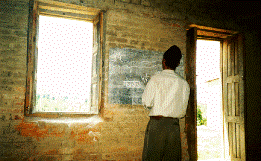
For children to learn effectively, teachers need to be well trained, well resourced, and have positive attitudes to multigrade teaching. However, many teachers who find themselves in a multigrade environment are either untrained or trained in monograde pedagogy. They have few teaching resources and very few learning resources. They regard the multigrade class as a poor cousin of the better-resourced monograde class found in large, urban schools, staffed by trained teachers. Teachers’ perceptions of the multigrade learning and teaching environment reflect academic and professional hierarchies, in which some types of pedagogic knowledge are seen as more valuable than others. As a result of this value system, the issue of multigrade education is conspicuously absent from international and national research agendas, teacher education curricula, the structure and sequencing of school curricula, priorities for professional education and education information networks.
The fulfilment of Education for All depends to a large extent on the ability of education specialists to support teachers and learners in multigrade classes. But it also depends, interestingly, on support for multigrade learning within the monograde class. All classes, whether multi- or monograde, comprise learners working at multiple levels of achievement. All teachers and learners need a multigraded pedagogy.